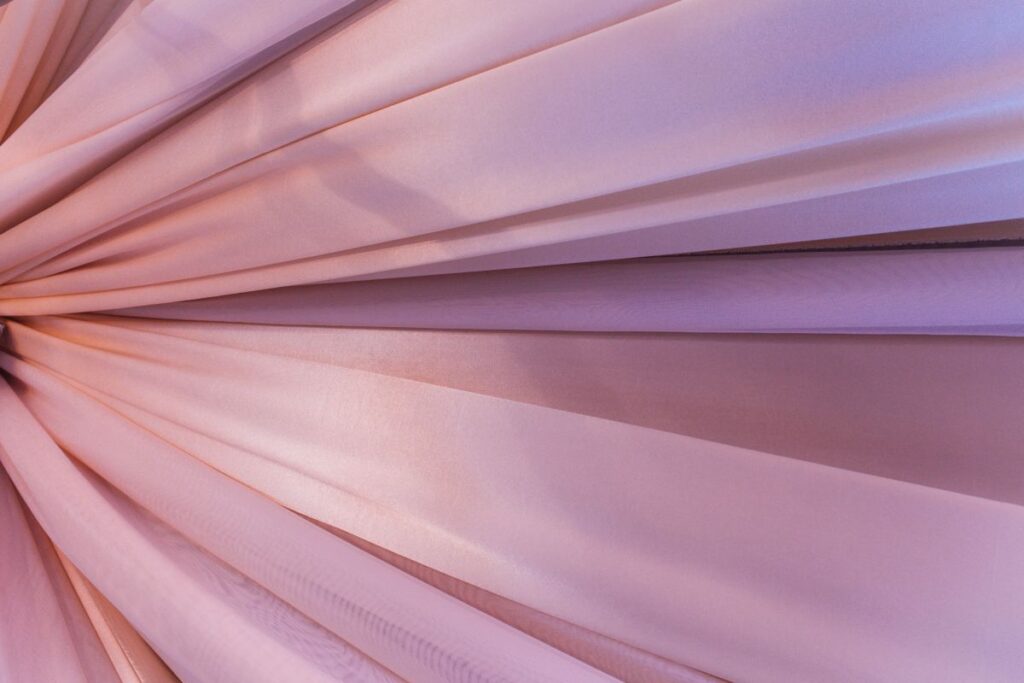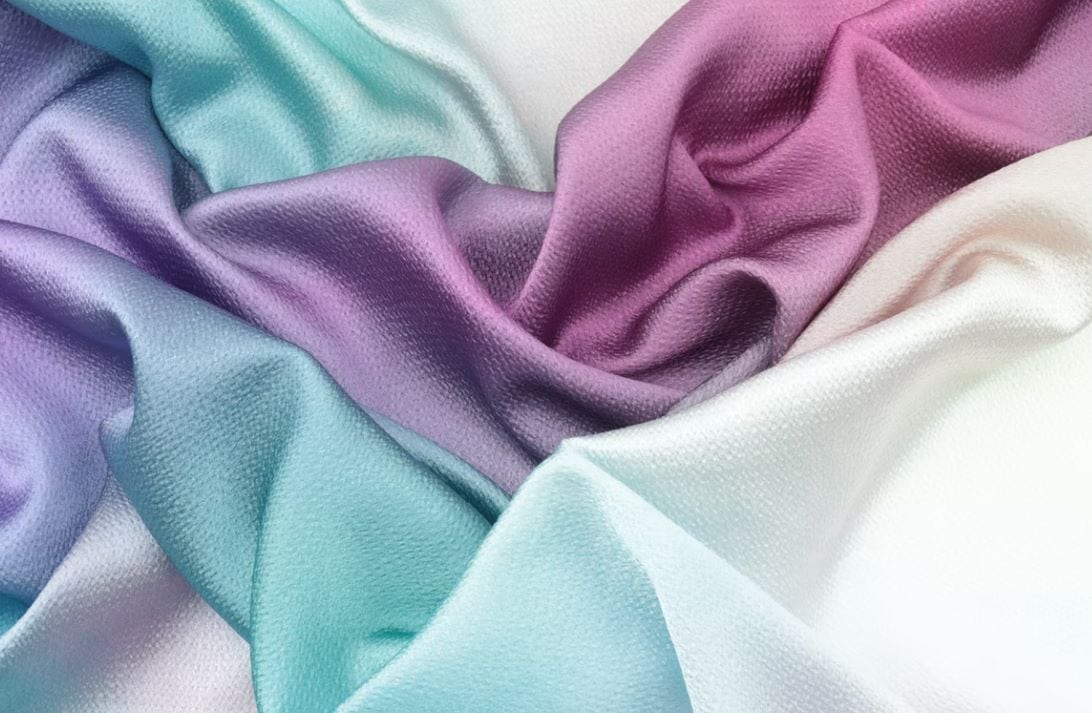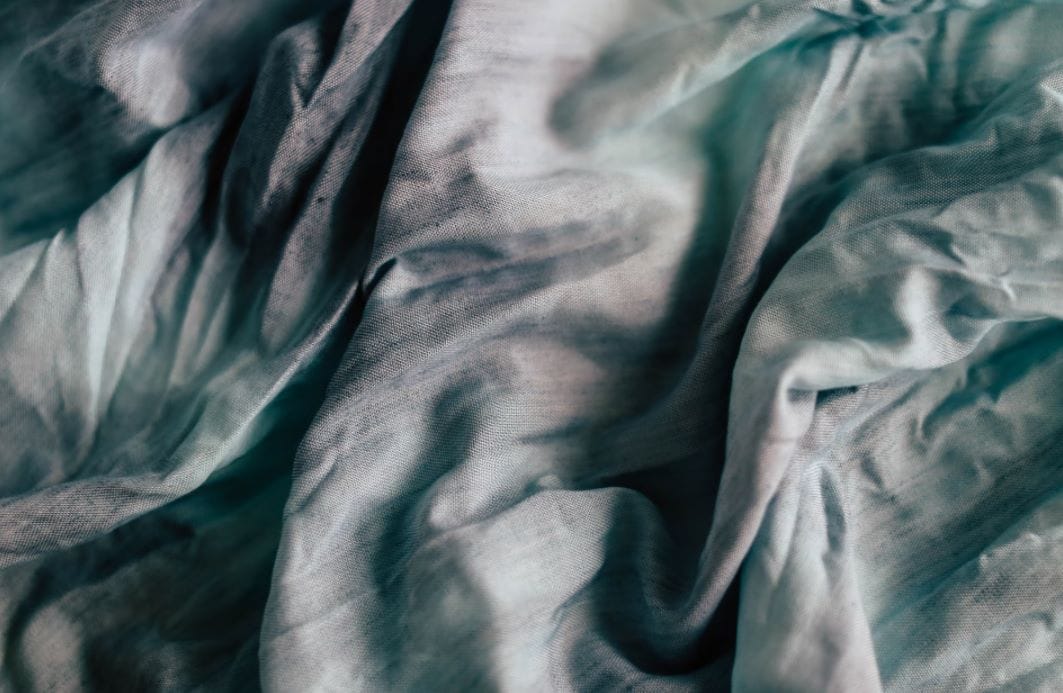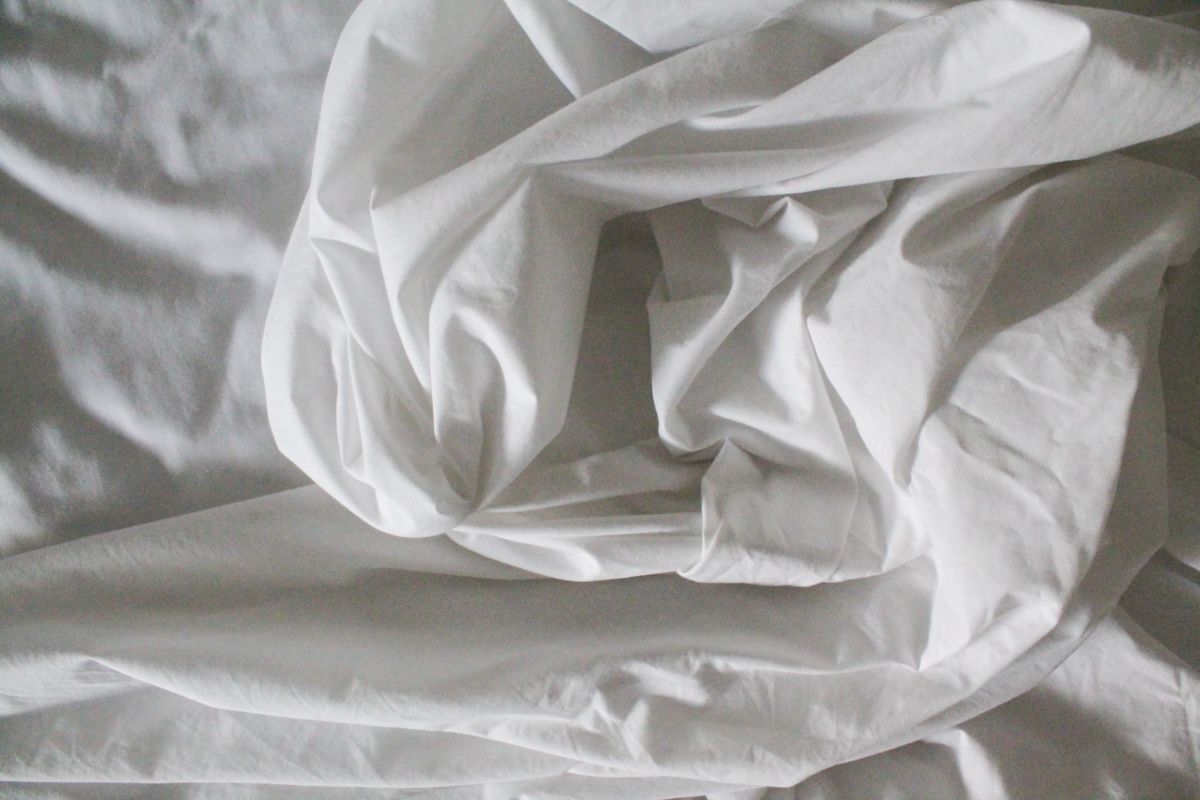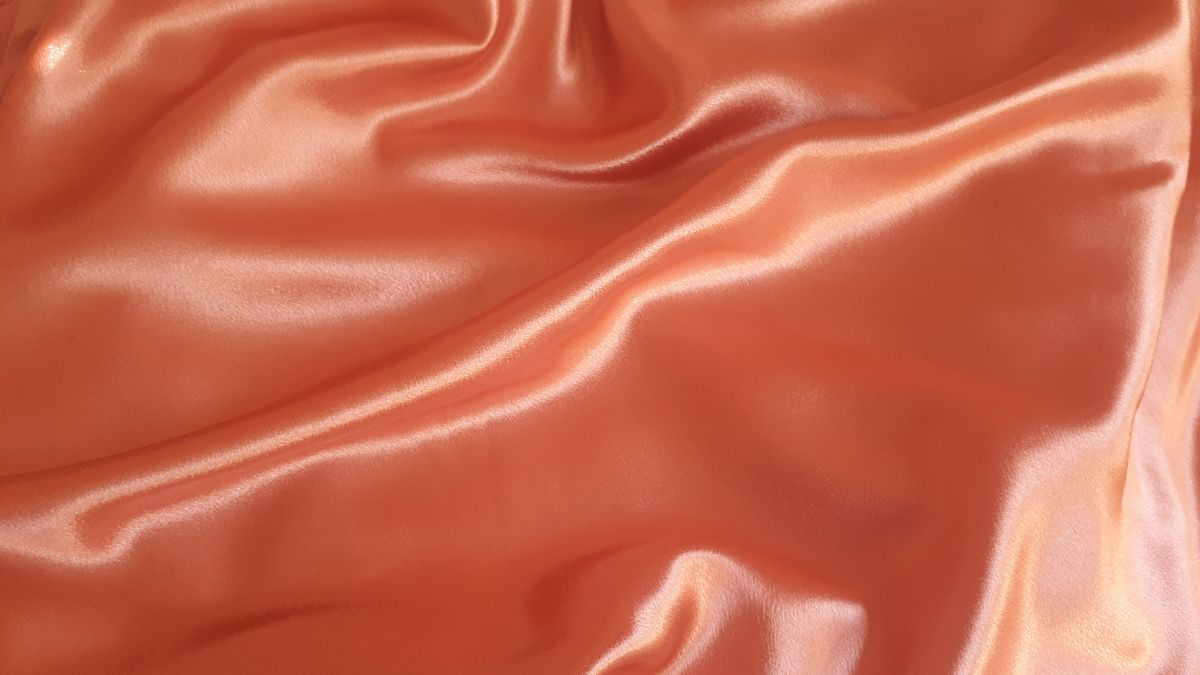Chinlon fabric is a great alternative to cotton. It stretches and allows air to pass through while not shrinking in the wash. As a result, it is an excellent choice for dresses, shirts, and any other type of clothing that you feel comfortable wearing. Furthermore, Chinlon is simple to care for; simply launder it like any other piece of clothing.
The Chinlon fabric has been around for a while, but because it can be used in so many different applications, it has recently seen an increase in demand. You can get different types depending on the item you make (for example, a shirt versus pants), which gives people who make their own garments even more ownership of what they're wearing than they already have, which is saying a lot given the amount of control they already have.
Chinlon Fabric is a type of fabric that is used to make a wide range of garments. This material has properties that make it an extremely useful component in the production of clothing. Chinlon material has a variety of desirable properties, including the ability to stretch, shrink, breathe, and fizzle with ease. One of the many advantages of this type of fabric is the ability to have different colours dyed into it. When selecting materials for your clothing, it is critical to look for all of these characteristics because they provide good durability and flexibility options in the long run.
The yarns used to make chinlon fabric are made of polyester, making it a synthetic material. This means it can stretch up to twice its length without losing shape or deteriorating over time in the same way that fabrics do. Furthermore, Chinlon Fabric is resistant to moisture and abrasion. Because it also contains spandex, it will simply return to its original shape after washing rather than wrinkle. This keeps it from appearing sloppy.
Chinlon fabric is a spandex and cotton blend that has been on the market for quite some time. This type of athletic wear can be found in a variety of stores, including Macy's, Old Navy, Gap, and many others! Because these clothes are stretchy and comfortable, they will move with you.
They also have good breathability, so you won't overheat or sweat as much if you wear them during your activities or throughout the day. Because Chinlon fabrics are resistant to shrinkage even after being washed in the same manner as other materials, purchasing clothing online is a less risky endeavour than it would be if the garments shrank after just one wash.
These clothes will continue to fit just as well after multiple washes as they did before you washed them. As a result, there is no need for you to be concerned about having to buy a frame that is smaller than what you currently own due to the garment shrinking. Chinlon is a type of synthetic material or stretch fabric that has grown in popularity in recent years due to its ability to serve as a suitable alternative to suede and leather in a variety of applications. This material is frequently chosen when making other accessories, bags, or sneakers while still looking professional and sleek. Fashion is another popular application for this material.
However, some people are unaware of what this fabric is, how it works, or why they need to use it in their lives! If you are one of these people, this blog post will assist you in explaining everything there is to know about chinlon fabrics and the characteristics they possess. Chinlon is a type of fabric that is frequently chosen by those who sew because it possesses a wide range of desirable qualities, including the fact that it is easy to maintain and is reasonably priced. Furthermore, because Chinlon is so versatile, it can be used in a wide range of applications. Continue reading if you're curious about the characteristics that set this fabric apart from others of its kind.
How To Shrink Chinlon?
This will be a risky because plastic does not always do what you want it to do when heated. However, this is the most effective method for shrinking Chinlon. Heat the fabric enough to soften or loosen the fibres and reshape it.
Boiling water on the stove, then adding the material for a few minutes. Then, place the material in your dryer and heat it up. If possible, turn your material inside out before performing these steps.
15 to 20 minutes in hot water should suffice, followed by one cycle in the dryer. When you try to shrink it, leave it alone to dry. If you don't get the desired amount of shrinkage, repeat the process 2 to 3 times more. However, a word of caution is required. First, don't expect your chinlon fabric to behave the way you want it to. It is still a type of plastic, and when placed in hot water, it may deform or melt on you.
Does Chinlon Stretch?
Because one of its primary uses is for lounging swimwear, the material should have some stretch to it. Furthermore, because it is made of nylon, stretch will be one of its benefits. The amount of stretch depends on the finished product's quality and whether it was woven as a knitting or a regular weave. Each material has its own set of limitations, with some lasting longer than others.
The amount of stretch you get will also be determined by the type of clothing item you make from the fabric. If you enjoy sewing and are looking for a new challenge, you should purchase this material and see what you can create with it. Because it is a type of nylon, it may be difficult to work with.
Is Chinlon Breathable?
When it comes to breathability, the general rule of thumb is that if a material fits more closely or snugly to the body, it has less of it. Chinlon does not provide much ventilation or breathing ability because it is made of a very tight and restrictive fabric. If you do, you should be thankful because nylon is not a very breathable material.
Because this fabric is commonly used to make swimwear, it is not appropriate to wear on a hot summer evening or to a formal event due to its association with swimwear. Instead, take it to the beach, where breathing isn't as important to how you look or feel in the water. This information is recommended for active events in which you are more actively involved, such as cycling, jogging, or other similar activities. You could also wear it as a foundation layer when layering up for warmth in the winter.
Is Chinlon Vegan?
So long as its chemical components are acceptable to vegans, this fabric should be fine for them. This fabric was made without using any kind of animal products. However, similar harmful chemicals used to produce polyester, nylon, and other synthetics are also employed in the production of this fabric.
To be sure of what materials were used to create this fabric, please refer to the labels provided by the manufacturer. Who knows, maybe they snuck in some animal byproducts to make the fabric silkier, softer, and better than the competition's synthetic choices.
If nylon is deemed vegan, then it follows that Chinlon must also be vegan. Although the list is very extensive and informative, it does not include this particular nylon variant. Remember what we said about making sure. In the world of fashion, you can't assume anything.
Is Chinlon Safe?
What do you mean by safe? Will Chinlon sneak up behind you while you sleep and strangle you? Yes, then it is secure. You and your loved ones are safe from harm at the hands of Chinlon.
Aside from the fact that it is manufactured using harmful chemicals, this fabric is the same as any other synthetic in terms of its potential for harm. There's always a chance that toxic chemicals will seep into your skin, where they can do serious damage. Then, from a green perspective, Chinlon should be recycled instead of being dumped in a landfill if it degrades like polyester and other synthetic materials.
It could take the material up to two hundred years to disintegrate and disappear completely, so be prepared for the leaching of harsh and hazardous chemicals into the ground. It's important to keep in mind that synthetics are just another type of plastic that's difficult to recycle.
Chinlon Bathing Suit
This appears to be the primary function of the fabric. The only other use we could find for it was in swimwear, but it could also be used in activewear or athletics. You wouldn't want to swim in this stuff, though.
If you want to avoid any unpleasant situations while swimming, you should probably switch to a different material that is more resistant to water. This cloth is known for being more suitable for sunbathing and relaxing than for swimming.
Different people will have varying experiences, and various scenarios will provide various outcomes. There are always ways to break the rules while working with fabric. Before releasing your new swimsuit to the public, give the material a tryout in private to check how it performs.
Fabrics That Are Toxic To Your Health
1. Polyester
If you're looking for a synthetic fabric, chances are it'll be polyester. It can be made using a combination of natural components like cotton to reduce the appearance of wrinkles and tears, but this does not mean that it is safe for human health.
Polyester makes it difficult for your skin to breathe. In addition, as your body temperature rises, chemicals in this cloth are released and absorbed via your skin.
Itching, redness, rashes, dermatitis, and eczema are just some of the skin conditions that might develop as a result. Avoid using polyester as much as possible, including in bedding and clothing.
2. Rayon (Viscose)
Cellulose from wood pulp is chemically processed to create rayon, a man-made fibre. This material is harmful both in its creation and its use as clothing.
Toxic chemicals released by rayon fabric have been linked to stomach upset, vomiting, headaches, muscle aches, chest pain, and sleeplessness. Along with all that, its manufacture is a major contributor to environmental degradation.
3. Nylon
Nylon is used to make a wide variety of common garments, including socks, lingerie, underwear, panti-hose, and many more. Its widespread use can be attributed to the fact that it lasts a long time and doesn't cost much to make. But nylon isn't the best option for next-to-skin wear.
Nylon fabrics can not absorb perspiration, which can lead to unpleasant odours and even skin diseases. Many different chemicals are used in the process of bleaching and dying the fabric. When worn directly on the skin, it can trigger a skin irritations.
4. Acrylic
Acrylonitrile, the chemical used to make acrylic fabrics, is a carcinogen as well as a mutagen. The presence of this drug in your environment may cause a number of negative health effects.
This category includes symptoms such as headache, dizziness, nausea, limb weakness, difficulty breathing, and many others. Furthermore, if you wear acrylic fabrics, you run the risk of your skin absorbing some of the acrylonitrile in the fabric. Furthermore, the production of acrylic contributes significantly to the problem of environmental contamination.
5. Spandex/Lycra/Elastane
These fabrics are extremely stretchy, and they are used to make many tight clothes such as sports bras, leggings, T-shirts, shaping underwear, tights, bikinis, and so on.
These, like other synthetic fabrics, are made from harmful chemical substances such as polyurethane, which is also a carcinogen. Furthermore, prolonged contact with these fabrics can result in skin irritations such as dermatitis.
6. Static-Resistant, Stain-Resistant, Permanent Press, Wrinkle-Free, Stain-Proof, or Moth-Repellent Fabrics
Many wrinkle-free and stain-resistant fabrics contain perfluorinated compounds (PFCs) such as Teflon. These pollutants have been discovered in both humans and marine life.
Which Fabrics Are Safe To Wear?
- Cotton is hypoallergenic, durable, and long-lasting, and it is also breathable, absorbent, insulating, and weather-appropriate. It's incredibly soft and smooth against the skin, making it one of the most pleasant textiles to wear.
- Merino wool is an all-natural fibre that keeps you comfortable by absorbing and releasing moisture, and it retains its form and looks great for years. Rather, it's ultra-smooth and light, and it provides natural protection from the sun's rays. Alpaca wool is another alternative that can be considered.
- The cashmere sweaters were beautiful and well worth the price. Cashmere's natural softness and silky texture are a result of the absence of any artificial dyes or finishes, and they are a joy to experience on the skin.
- The usage of hemp as a fabric dates back thousands of years. It has earned a stellar reputation for its durability and longevity. When it comes to maintaining its form without stretching, this natural material is unparalleled. What's more, it breaks in and softens with use.
- The silky smoothness and richness of its texture aren't the only things that make this cloth so desirable; it also has numerous positive effects on human health. It's antifungal, it helps with allergies and it even helps you sleep better if you suffer from eczema or asthma.
- For those interested in trying something different from the norm, bamboo is a fascinating new natural fabric. The hypoallergenic, extremely breathable, and temperature-regulating properties of bamboo textiles add to their already luxurious feel. Similar to merino wool, it blocks harmful UV rays and wicks away moisture from the skin. Also, it decomposes in the natural environment.
- Because of its softness and durability, linen is a popular fabric choice. Furthermore, it is easy to care for and may be used in any season. In the same vein as other natural fibres, it is hypoallergenic, soft as silk, and breathable for your skin.
Conclusion
Chinlon fabric is a spandex and cotton blend that has been on the market for quite some time. This material has properties that make it an extremely useful component in the production of clothing. Chinlon can stretch, shrink, breathe, and fizzle with ease. Chinlon fabrics are resistant to shrinkage even after being washed in the same manner as other materials. Purchasing clothing online is a less risky endeavour than it would be if the garments shrank after just one wash.
Chinlon is so versatile, it can be used in a wide range of applications. If you enjoy sewing and are looking for a new challenge, you should purchase this material. Because it is a type of nylon, it may be difficult to work with. Chinlon does not provide much ventilation or breathing ability because it is made of a very tight and restrictive fabric. This fabric was made without using any kind of animal products.
There's always a chance that toxic chemicals will seep into your skin, where they can do serious damage. Chinlon should be recycled instead of being dumped in a landfill if it degrades like polyester and other synthetic materials. Fabrics that are toxic to your health include polyester, rayon and acrylic. Nylon fabrics can not absorb perspiration, which can lead to unpleasant odours and even skin diseases. Acrylonitrile, the chemical used to make acrylic fabrics, is a carcinogen as well as a mutagen.
Many wrinkle-free and stain-resistant fabrics contain perfluorinated compounds (PFCs) such as Teflon. Merino wool is an all-natural fibre that keeps you comfortable by absorbing and releasing moisture. Cashmere's natural softness and silky texture are a result of the absence of any artificial dyes or finishes. The usage of hemp as a fabric dates back thousands of years. Similar to merino wool, it blocks harmful UV rays and wicks away moisture from the skin. It's antifungal, it helps with allergies and it even helps you sleep better at night.
Content Summary
- This blog post will help you understand chinlon fabrics and their properties.
- Chinlon fabric is a great alternative to cotton.
- Chinlon Fabric is a type of fabric that is used to make a wide range of garments.
- When selecting materials for your clothing, it is critical to look for all of these characteristics because they provide good durability and flexibility options in the long run.
- Chinlon fabrics resist shrinkage even after being washed like other materials, making online apparel shopping less dangerous than if items shrivelled after one wash.
- Chinlon is a synthetic stretch fabric that has gained appeal as an alternative to suede and leather.
- Fashion is another popular application for this material.
- Some don't know what this fabric is, how it works, or why they need it.
- Chinlon's versatility makes it useful in many applications.
- However, this is the most effective method for shrinking Chinlon.
- Heat the fabric enough to soften or loosen the fibres and reshape it.
- The amount of stretch depends on what you make from the fabric.
- If the fabric's chemicals are vegan-friendly, it should be alright.
- This fabric was made without using any kind of animal products.
- To be sure of what materials were used to create this fabric, please refer to the labels provided by the manufacturer.
- You and your loved ones are safe from harm at the hands of Chinlon.
- Aside from being made with toxic chemicals, this synthetic is as harmful as any other.
- There are always ways to break the rules while working with fabric.
- Before releasing your new swimsuit to the public, give the material a tryout in private to check how it performs.
- Avoid using polyester as much as possible, including in bedding and clothing.
- These, like other synthetic fabrics, are made from harmful chemical substances such as polyurethane, which is also a carcinogen.
- Prolonged contact with these fabrics can result in skin irritations such as dermatitis.
- Static-Resistant, Stain-Resistant, Permanent Press, Wrinkle-Free, Stain-Proof, or Moth-Repellent Fabrics
- Many wrinkle-free and stain-resistant fabrics contain perfluorinated compounds (PFCs) such as Teflon.
- It's incredibly soft and smooth against the skin, making it one of the most pleasant textiles to wear.
- Merino wool is an all-natural fibre that keeps you comfortable by absorbing and releasing moisture, and it retains its form and looks great for years.
- The usage of hemp as a fabric dates back thousands of years.
- For those interested in trying something different from the norm, bamboo is a fascinating new natural fabric.
- Because of its softness and durability, linen is a popular fabric choice.
- In the same vein as other natural fibres, it is hypoallergenic, soft as silk, and breathable for your skin.
FAQs About Chinlon Fabric
We could be philosophical here and say what synthetic fibre is not polyester. However, many different synthetic fabrics are all made from the same chemicals as polyester, so technically, they are all polyester.
Chinlon is a variation of nylon so expect it to have the same characteristics as that fabric. Unfortunately, its durability is questionable, and although it is made into swimwear, it is not that good to swim in.
Chinlon is more of a lounging fabric that doesn’t breathe that well even though it stretches like nylon. Most likely, unless it has been treated to prevent it, this material will shrink like nylon shrinks.
Chinlon Vs Polyester
This is not easy to make a few people talk about chinlon as a different fabric from nylon. That may be because chinlon is a form of nylon with the same characteristics even though it is not as durable or as strong as that fabric.
It should be as strong or stronger than polyester, though, since nylon is stronger. Plus, you should have some excellent stretching ability when wearing this material over other synthetic fabrics.
The smooth texture makes chinlon a nice material to have next to your skin and helps give your figure a great look. As for care
The best answer we can give here is yes, it is. It is not as thick as regular nylon, but it is made from the same ingredients as that fabric and is a form of it. Chinlon is to nylon-like muslin is to cotton.
There are differences, but essentially they are the same fabric in different textures and quality. This is good because you should not see a lot of pilling when washing Chinlon, and you get a lot of stretch room when you move.
Plus, the material is soft and comfortable to wear. So, when you are not in the mood to get wet, this material is an excellent option when you want to sit by the pool and get some sun. Also, the material should resist snags when you wear it.
Chinlon Vs Nylon
It is possible to say that Chinlon is a nylon upgrade. However, polyester and nylon have difficulties feeling like natural fabrics. While they can get smooth, there is a lot of roughness and artificial feel to both materials.
The makers of Chinlon have done to apply new technological advances to make this upgrade smoother than nylon. While made from the same ingredients as nylon, Chinlon can be seen as an 'Egyptian cotton' variation to regular cotton compared to nylon.
They all have the same properties, but one is just better and more refined than the other. Chinlon would be refined nylon over nylon. Hopefully, that gives you a clear picture of what Chinlon is when compared to nylon.
You may get more stretch out of Chinlon than you do nylon, but that would depend on the quality of the material.
Being made from nylon, it will have some stretch to it. How much stretch you get will be up to the manufacturer and the quality levels they adhere to. With some unethical manufacturers in the fabric industry, it is more like trial and error to find the right Chinlon fabric that stretches as nylon does.
One thing is for sure; it will be more stretchy than regular polyester, which does not have a lot of stretch to it at all. However, nylon has a great stretching ability, so you should expect the same performance out of Chinlon up to a point.
Variations are not always equal to the original fabric. Changes in the manufacturing process make sure that the variation is either better or worse than the original. But, until you buy and wear it, you won't see those differences.
Synthetic fibres, which Chinlon is made from, usually do not absorb water. Instead, they repel it, and that behaviour provides the user with the idea the fabric is waterproof. But waterproof only goes so far in the fabric world, and you can say that just about every fabric is waterproof to a certain point.
Once that point has been reached, then the fabric will be saturated with water, and you will get wet. So let's say that you will remain dryer longer wearing Chinlon than you would if you wore cotton or other natural materials.
Once it has reached its saturation point, expect to get wet and uncomfortable. But outside of a dry suit, do not expect many fabrics to keep the water off your body for long.
Most likely, this upgrade to nylon will shrink if heat is applied to the material. That is the way it is with synthetics, as they are merely different forms of plastic, and plastic melts when hot.
So instead of shrinking, you might see melting and deformities when you put the fabric in the dryer or use hot water to clean it. But, and it is a big but, some manufacturers may treat the material with a chemical to help prevent shrinking or melting.
It is hard to say if they do it for this fabric as it is usually an expensive process and adds cost to the finished product. Check the label to see if the Chinlon based item you want to buy has been treated for shrinking or not.
